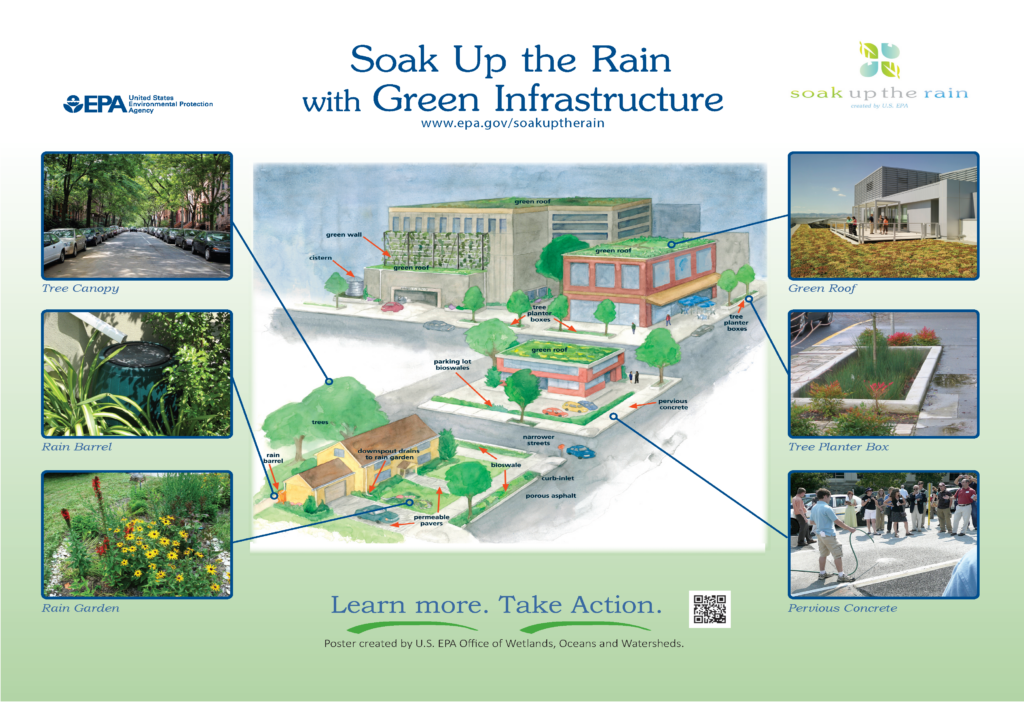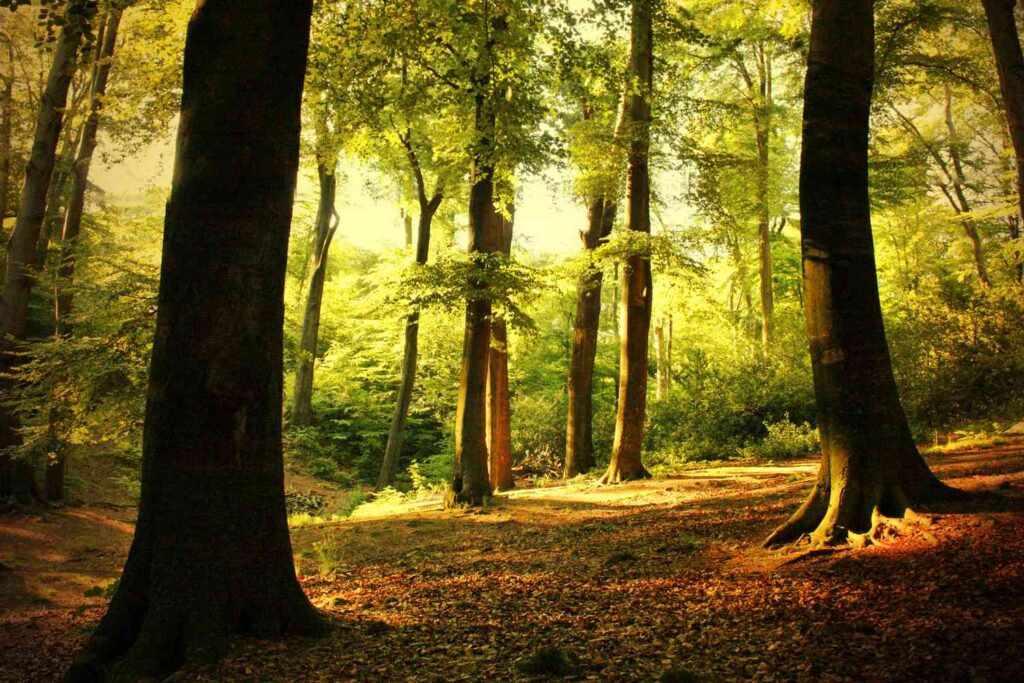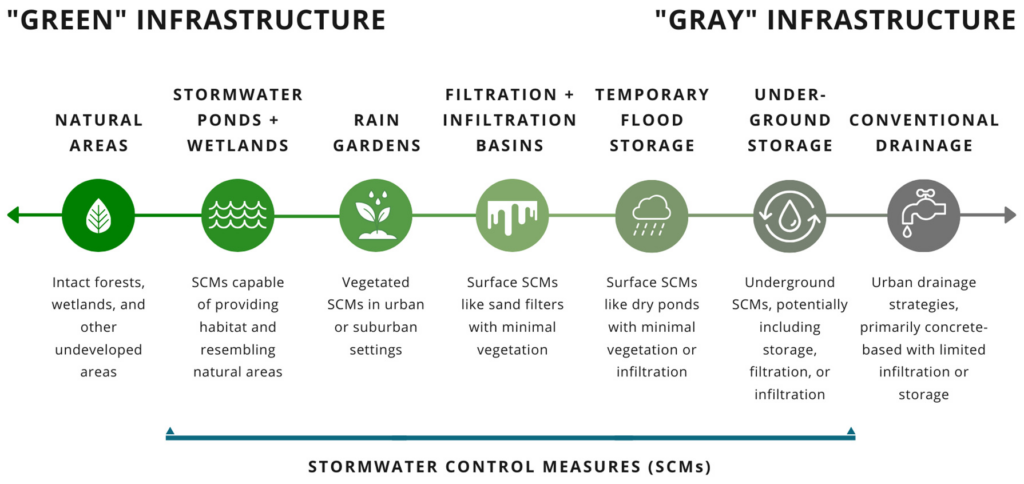Stormwater
Rain and snowfall on impervious surfaces, like asphalt or rooftops, creates stormwater flows. The streaming water moves downhill picking up chemical, pathogenic, and trash pollutants along the way. The contaminated water makes its way into creeks, rivers, lakes, and bays. Green Stormwater Infrastructure (GSI) uses elements of natural systems to slow and filter stormwater.

GSI can be simple and affordable, expensive and complex, or somewhere in between. Planting trees builds a protective canopy that lessens the force of falling rain on surfaces. Meanwhile, roots absorb water and release it as vapor into the air. Concrete can be engineered to allow infiltration, sending water into the ground to recharge groundwater instead of being lost to storm sewers and overflowing creeks.

Remember though, that native plant communities are the most effective ways to treat stormwater. Protecting existing natural areas or greenspaces is the first step to smart stormwater management. Creative ways of directing water into systems designed to imitate nature is the basis of GSI. A combination of green and gray infrastructure (think pipes and concrete) are used to build an effective municipal stormwater management system.

Vinicius J. Taguchi; accessed Jan 2023 from: https://www.mdpi.com/2073-4441/12/2/522
Pollutants of Concern
Stormwater carries and deposits a variety of pollutants. Some can be filtered out by plants and microbial activity, others cannot. The main classes of pollutants that may be treated through stormwater management and GSI are:
Sediments (suspended solids) – from hard surfaces, exposed soils, stream bank erosion.
Nutrients – from fertilizers, manures and animal waste
Metals – from industrial sources, transportation, atmospheric deposition
Pathogens – from animal feces
Chemical – exhaust, pesticides, industrial sources
*Chlorides – from deicing salts and brines
*Chlorides cannot be removed from stormwater through infiltration GSI. Over time, levels are actually concentrated in soils, a significant stressor for plants and wildlife. The best practice is to reduce use.
